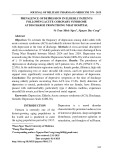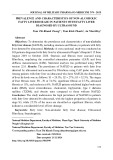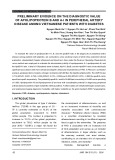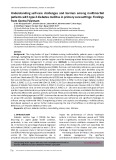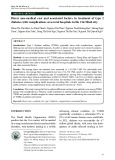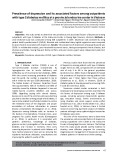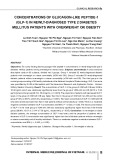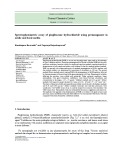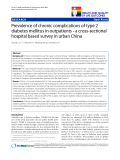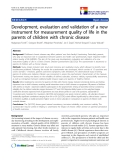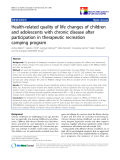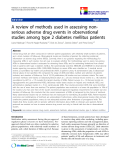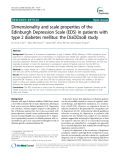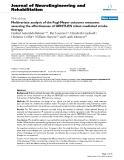
43
Journal of Medicine and Pharmacy, Volume 11, No.07/2021
Prevalence of depression and its associated factors among outpatients
with type 2 diabetes mellitus at a provincial endocrine center in Vietnam
Doan Vuong Diem Khanh1,2*, Dang Trong3, Nguyen Thi Dang Thu1, Nguyen Hoang Thuy Linh1,2
(1) University of Medicine and Pharmacy, Hue University, Vietnam
(2) Institute for Community Health Research, Hue University, Vietnam
(3) Quang Ngai Provincial Psychiatric Hospital, Vietnam
Abstract
Objectives: This study aimed to determine the prevalence and associated factors of depression among
outpatients with type 2 diabetes at the Endocrine Center in Quang Ngai Province, Vietnam. Methods: A
cross-sectional study was conducted among 606 outpatients in 2019. Depression was assessed by using
patient health questionnaire-9 (PHQ-9). Bivariate and multivariate binary logistic regression were computed
to assess factors associated with depression. Results: The prevalence of depression among participants was
25.6%. In multivariate analysis, poor household economic status, having accompanied chronic disease, lack
of physical activities, having frequent family conflicts, and poor social support were independent predictors
of depression.
Keywords: Prevalence, depression, PHQ-9, type 2 diabetes mellitus, Vietnam.
1. INTRODUCTION
Type 2 diabetes mellitus (T2DM) is one of
non-communicable diseases characterized by
hyperglycemia due to insulin deficiency and
ineffective use of insulin (American Diabetes, 2009).
With the current increasing prevalence of diabetes
over the world, the number is expected to rise to
578.4 million by the year 2030 (Federation, 2019).
The Global Burden of Diseases Projection found
that approximately 70% of morbidity and 88% of
mortality caused by diabetes happened in low and
middle-income countries (Mathers and Loncar,
2006). Regarding coping with chronic disease,
depression is one of the common and overwhelming
psychiatric disorders among people with diabetes. It
seems to be related to self-determination to control
the emotional shock of the diagnoses and proper
assimilation of self-care information to prevent
disease complications (Ganasegeran et al., 2014).
Depression among diabetes adds an increase in
the burden of complications, financial stress, poor
prognosis for quality health results (Ganasegeran
et al., 2014). In particular, it is associated with
patient’s adherence, knowledge of diabetes,
glycemic control, prolongation of the recovery from
diabetes, and increase in mortality. Then, early
screening depression in patients with diabetes will
help medical physicians treat well as reducing the
inpatients healthcare utilization, complications and
improving the patient’s quality of life.
Previous studies have found that the prevalence
of depression among patients with type 2 diabetes
ranges from 8 to 15%, compared with an estimated
rate of only 3 to 4% in the general population
(Anderson et al., 2001). Study in Bangladesh showed
the prevalence of depression among patients with
diabetes was 7 times higher than those without
(Chowdhury et al., 2017). In Vietnam, 23.6% of
diabetes patients have depressed by screening PHQ-
9 scale (Chi and Khue, 2016).
Numerous related studies conducted in both
developed and developing countries examined the
risk factors of depression among type 2 diabetes
people, including personal characteristic (gender,
age, education status), family environments as
living situation, and social support, social conflict
(Chowdhury et al., 2017; Tovilla-Zárate et al., 2012;
Sweileh et al., 2014). In Vietnam, there is limited
research concerning psychiatric aspects of diabetes
patients although many epidemiological researches
of diabetes were done.
The aims of the researchers were to determine
the prevalence and associated factors of depression
among outpatients with T2DM at the Endocrine
Center in Quang Ngai Province, Vietnam. The findings
from this study would provide worthy evidence to
develop more effective programs for screening,
diagnosing and management of depression among
diabetic patients in Vietnam and similar settings.
Corresponding author: Vuong Diem Khanh Doan; email: dvdkhanh@huemed-univ.edu.vn
Received: 12/7/2021; Accepted: 18/10/2021; Published: 30/12/2021
DOI: 10.34071/jmp.2021.7.6







